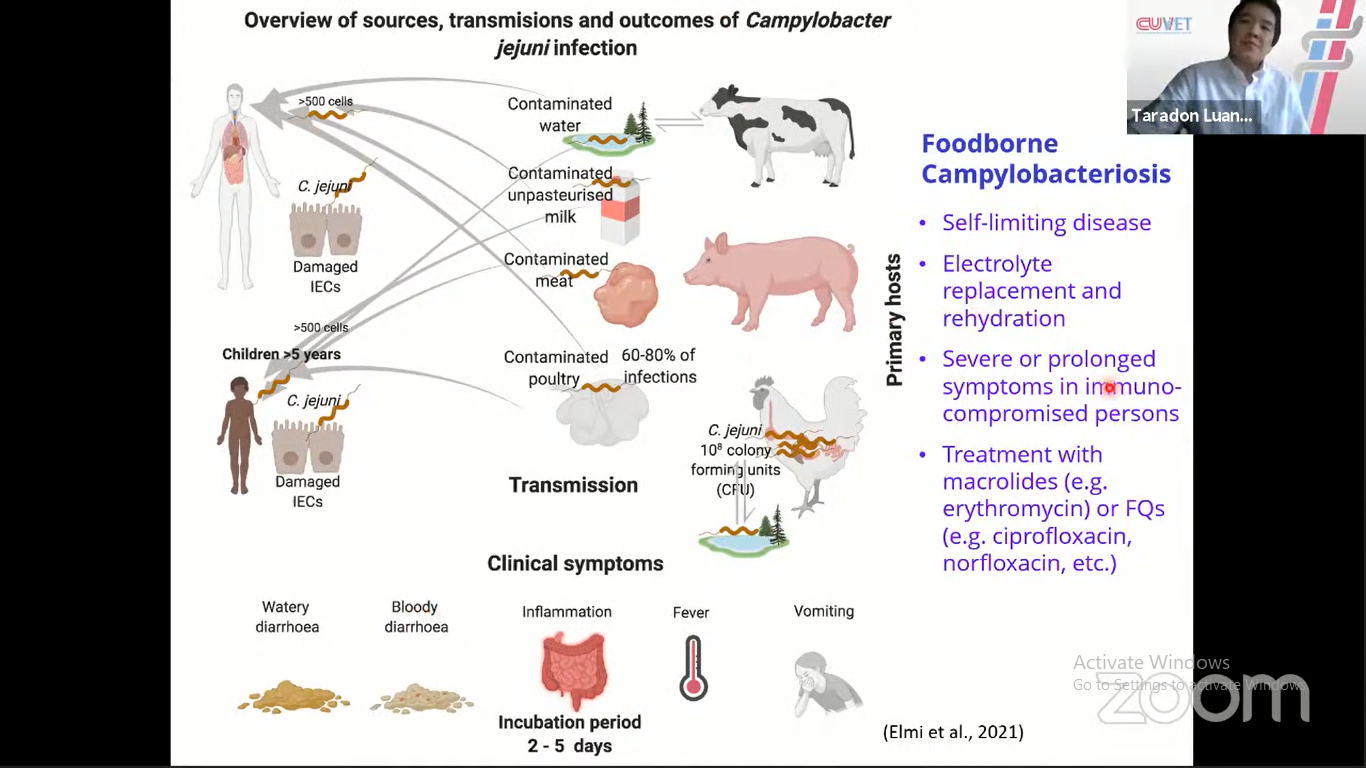UNAIR NEWS – The Veterinary Microbiology Division of UNAIR Faculty of Veterinary Medicine (FKH) held another Decota Guest Lecture last weekend. The topic of discussion was “Campylobacter and its Relation to Poultry Production.” The invited speaker was Taradon Luangtongkum, DVM., PhD from the Department of Veterinary Public Health, Faculty of Veterinary Science, Chulalongkorn University Thailand.
At the beginning of the presentation, Doctor Taradon said that Campylobacteriosis is a zoonotic disease caused by bacteria that can cause gastroenteritis in humans. Campylobacter species generally live in the digestive tract of warm-blooded animals such as poultry, cattle, pigs, sheep and ostriches, and domesticated animals including cats and dogs. This bacteria can also be found in shells.
“Campylobacter is rod-shaped forming a spiral-like letter “S” or curved-like “comma.” There are 17 species and 6 subspecies in the genus Campylobacter. However, the most commonly reported causes of human disease are C. jejuni (subspecies jejuni) and C. coli,” said Doctor Taradon.
Other species, he continued, such as C. lari and C. upsaliensis have also been isolated from patients with diarrhea, although they are rarely reported. The disease is transmitted through food (food-borne zoonosis) contaminated by the Campylobacter species pathogenic to humans. Those species are C. jejuni (90 percent) and C. coli (10 percent).
“Poultry is the main reservoir of bacteria, and the incidence of Campylobacteriosis in humans is mainly caused by consuming or handling poultry meat. In animals, Campylobacter rarely causes disease. The majority of people infected with Campylobacter recover, but some can cause more severe long-term health problems,” said Doctor Taradon.
Furthermore, children under the age of five and the elderly are at high risk because they have weaker immune systems. The incidence of Campylobacteriosis in developed countries is quite high.
WHO, he continued, in 2018 reported that almost 1 of 10 infected people suffers from this illness every year. Researchers have reported, 9 of 1,000 humans who consume grilled chicken have the chance of getting infected. In developing countries, Campylobacter infection in children under two years of age is very common and sometimes even causes death.
“Campylobacter can infect humans in several ways. Epidemiological studies have shown the correlation between infection and exposure to contaminated food. The consistent handling and consumption of raw or undercooked poultry have been shown to be an important risk factor. However, the possibility of infection can also be through water contaminated by infected wild animal feces because Campylobacter can survive in water,” he concluded.
Author: Muhammad Suryadiningrat
Editor: Nuri Hermawan (YA/AP)





